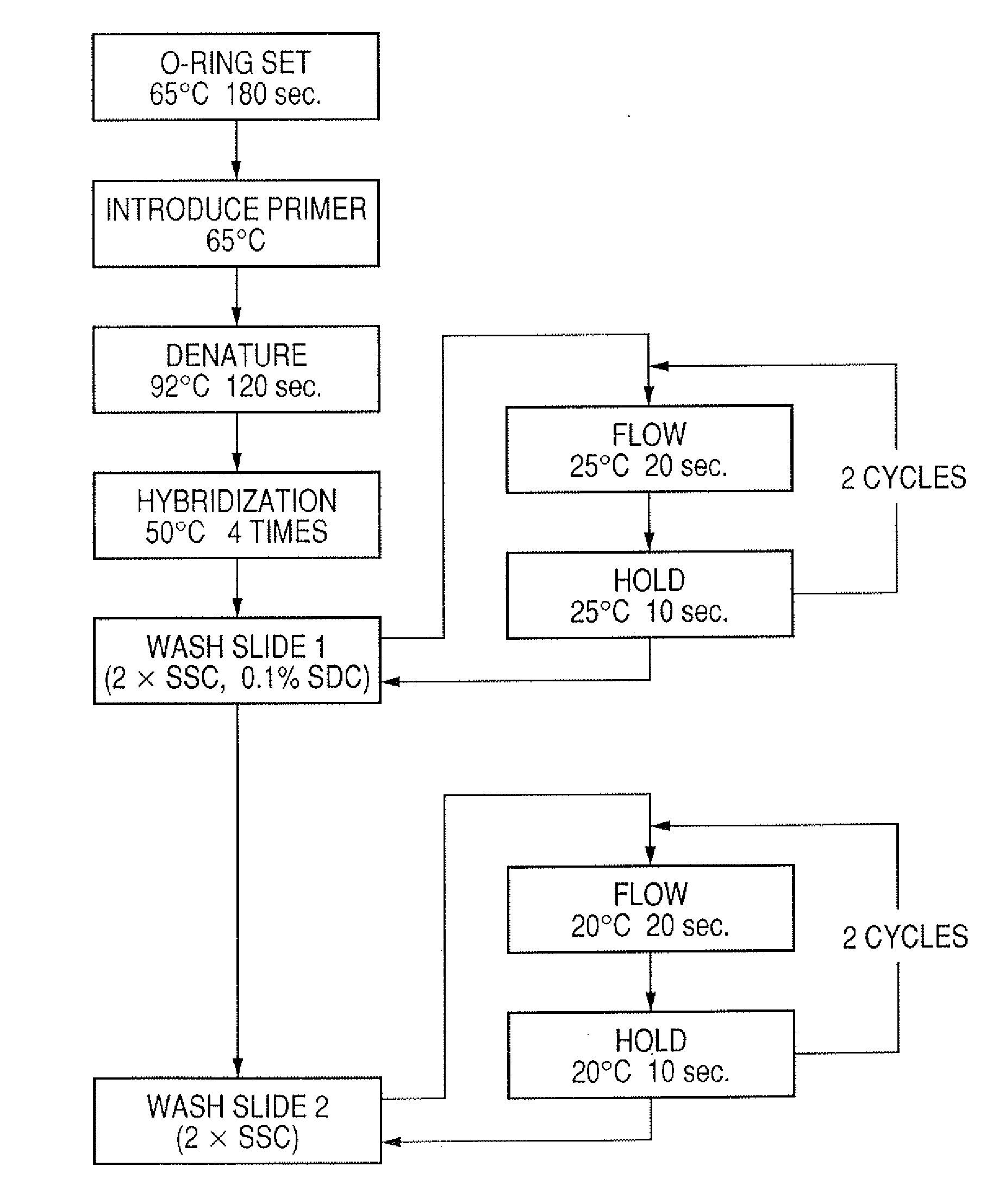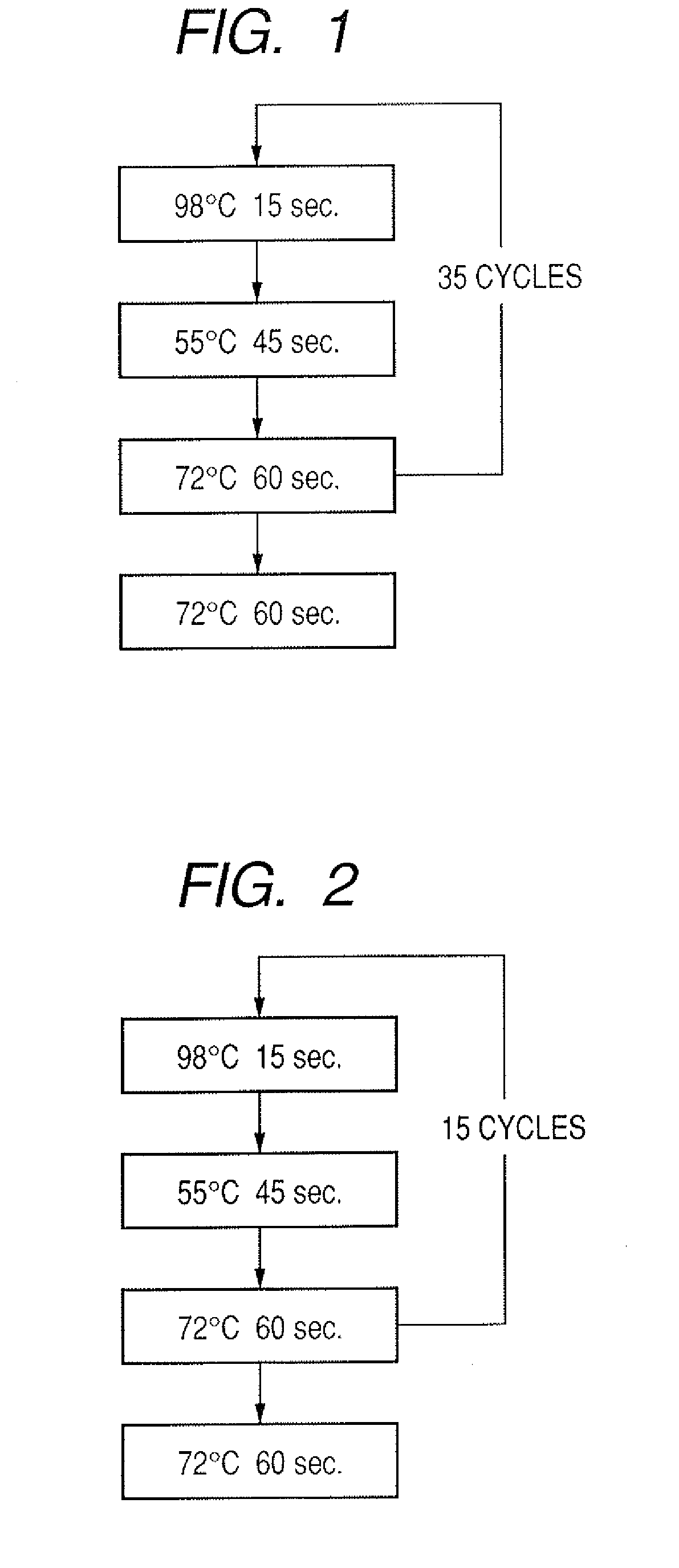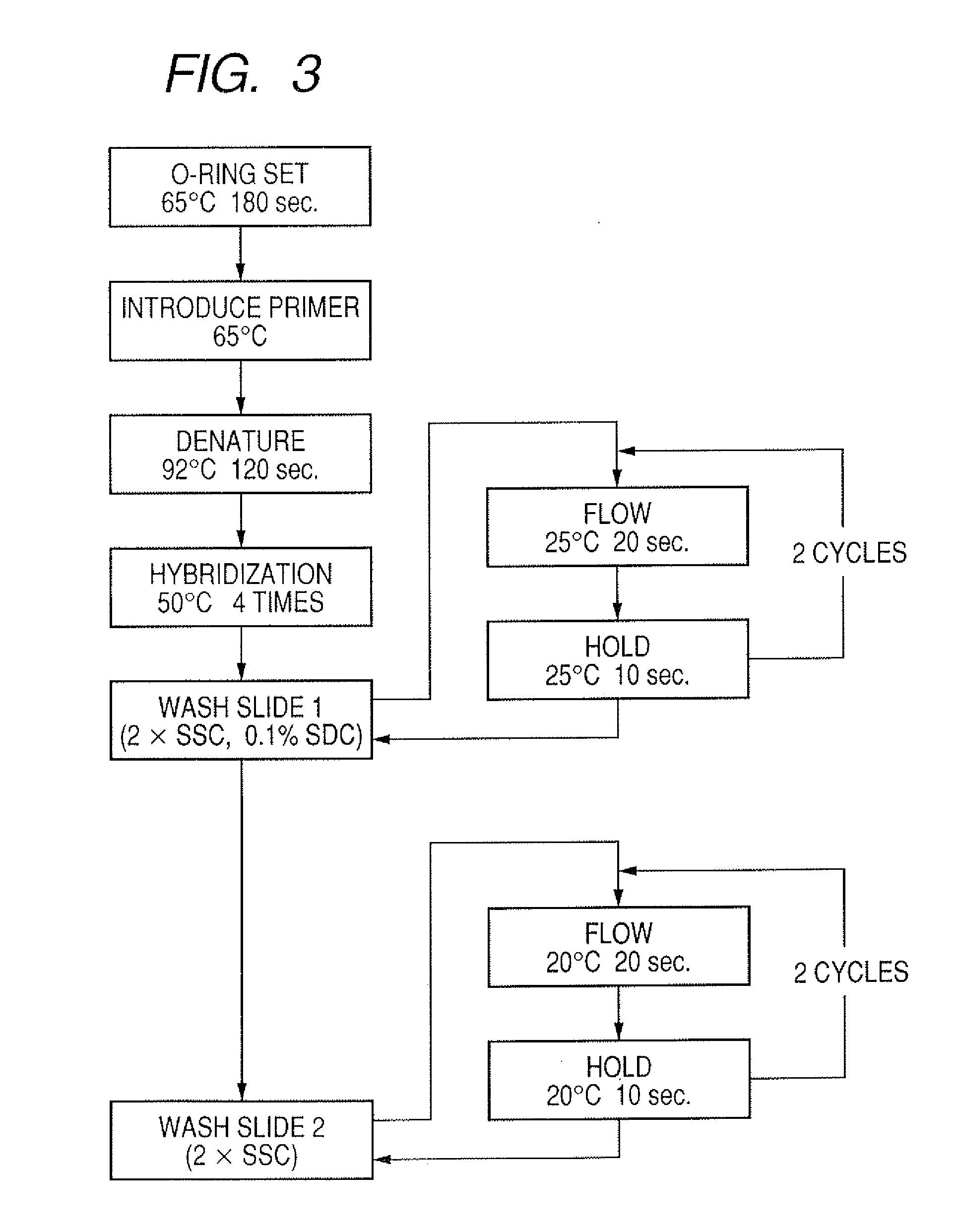Probe, probe set, probe carrier, and testing method
- Summary
- Abstract
- Description
- Claims
- Application Information
AI Technical Summary
Benefits of technology
Problems solved by technology
Method used
Image
Examples
example 1
Production of DNA Chip
[0098]In this example, the production of a DNA chip on which the probe of the present invention is immobilized is described.
[0099](1. Preparation of Probe DNA)
[0100]First, nucleic acid sequences represented in Table 1 were designed as probes for detecting fungi. Specifically, the probe base sequences represented as follows were selected from the ITS regions on the fungal DNA sequences represented in Table 1. Those probe base sequences are designed so that they will be expected to have extremely high specificities and sufficient hybridization sensitivities without any variation in the respective probe base sequences. Note that the probe base sequences do not have to be limited to the sequences which completely correspond to those represented in Table 1. The base sequences having about 20 to 30 bases each of which include the probe base sequences may be also included in the probe base sequences of Table 1. In this case, other portions other than the base sequence...
example 2
Detection of Candida albicans
[0121]In this example, the detection of a microorganism using a two-step PCR method is described.
[0122](1. Extraction of DNA from Candida albicans (Model Specimen))
[0123](1-1. Culture of Microorganism and DNA Extraction Therefrom)
[0124]First, Candida albicans (standard strain, JCM1542) was cultured in accordance with a conventional method. Subsequently, DNA was extracted from the microorganism culture medium and then purified by a nucleic acid purification kit (FastPrep FP100A and Fast DNA Kit, manufactured by Funakoshi Co., Ltd.).
[0125](1-2. Examination of Collected DNA)
[0126]The collected DNA of the microorganism (Candida albicans) was subjected to agarose electrophoresis and absorbance determination at 260 / 280 nm to examine the qualities of the DNA (i.e., the amount of low-molecular weight nucleic acid as a contaminant and the degree of decomposition) and the collected amount of the DNA. In this example, about 10 μg of DNA was collected, while the de...
example 3
Experiment of Other Fungi
[0146]This example describes that strong hybridization cannot be detected on any of fungi other than Candida albicans when the DNA chip prepared in Example 1 is employed.
[0147](1. Extraction of DNA (Model Specimen))
[0148](1-1. Culture of Microorganism and DNA Extraction Therefrom)
[0149]The following fungal strains were cultured in a manner similar to Example 2 and the DNA thereof was then extracted and purified. The deposit number of each fungus strain is represented in the parentheses after the name of the fungus.
Candida dubliniensis (ATCC MYA-646)
Candida glabrata (JCM 3761)
Candida guilliermondii (ATCC 6260)
Candida intermedia (ATCC 14439)
Candida kefyr (ATCC 42265)
Candida krusei (JCM 1609)
Candida lusitaniae (ATCC 34449)
Candida parapsilosis (JCM 1618)
Candida tropicalis (JCM 1541)
Trichosporon cutaneum (JCM 1462)
Trichosporon asahii (JCM 1809)
Cryptococcus neoformans (ATCC 32045)
Aspergillus fumigatus (JCM 10253)
Aspergillus niger (JCM 10254)
Epidermophyton floccosu...
PUM
 Login to View More
Login to View More Abstract
Description
Claims
Application Information
 Login to View More
Login to View More - R&D
- Intellectual Property
- Life Sciences
- Materials
- Tech Scout
- Unparalleled Data Quality
- Higher Quality Content
- 60% Fewer Hallucinations
Browse by: Latest US Patents, China's latest patents, Technical Efficacy Thesaurus, Application Domain, Technology Topic, Popular Technical Reports.
© 2025 PatSnap. All rights reserved.Legal|Privacy policy|Modern Slavery Act Transparency Statement|Sitemap|About US| Contact US: help@patsnap.com



